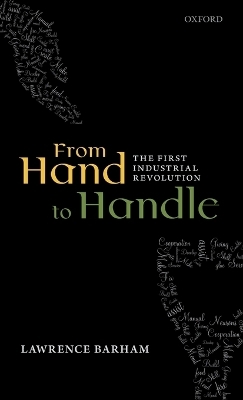
From Hand to Handle
The First Industrial Revolution
Seiten
2013
Oxford University Press (Verlag)
978-0-19-960471-5 (ISBN)
Oxford University Press (Verlag)
978-0-19-960471-5 (ISBN)
This volume brings together evidence for the cognitive, social, and technological foundations necessary for the development of hafting, or the addition of handles and shafts to previously hand-held tools, which made the tools not only more efficient, but improved their makers' chances of survival.
Mankind's utter dependency on technology extends back approximately three million years to the first stone tools, but it was only with the innovation of hafting, some 300,000 years ago, that technology took its first modern form and revolutionized our social and economic lives. The development of handles and shafts, which were added to some tools previously made of single materials and hand-held, made the tools not only more efficient but improved their makers' chances of survival by making the quest for food more productive.
This volume brings together evidence for the cognitive, social, and technological foundations necessary for the development of hafting to form a speculative theory about this revolutionary innovation. The creation of tools with handles required considerable planning based on an expert understanding of the properties of the raw materials involved, a form of early engineering. Yet it was the ability to envisage the final, integrated form of the tool which underpinned the remarkable novelty of hafting, one which had massive implications for the human species and which laid the foundations for the technology we rely on today.
Mankind's utter dependency on technology extends back approximately three million years to the first stone tools, but it was only with the innovation of hafting, some 300,000 years ago, that technology took its first modern form and revolutionized our social and economic lives. The development of handles and shafts, which were added to some tools previously made of single materials and hand-held, made the tools not only more efficient but improved their makers' chances of survival by making the quest for food more productive.
This volume brings together evidence for the cognitive, social, and technological foundations necessary for the development of hafting to form a speculative theory about this revolutionary innovation. The creation of tools with handles required considerable planning based on an expert understanding of the properties of the raw materials involved, a form of early engineering. Yet it was the ability to envisage the final, integrated form of the tool which underpinned the remarkable novelty of hafting, one which had massive implications for the human species and which laid the foundations for the technology we rely on today.
Lawrence Barham is Professor of Archaeology at the University of Liverpool where he teaches Evolutionary Anthropology.
ACKNOWLEDGEMENTS; LIST OF FIGURES; INTRODUCTION; BIBLIOGRAPHY; INDEX
| Erscheint lt. Verlag | 19.9.2013 |
|---|---|
| Zusatzinfo | 60 in-text illustrations |
| Verlagsort | Oxford |
| Sprache | englisch |
| Maße | 171 x 222 mm |
| Gewicht | 658 g |
| Themenwelt | Geisteswissenschaften ► Archäologie |
| Geschichte ► Allgemeine Geschichte ► Vor- und Frühgeschichte | |
| Naturwissenschaften ► Biologie ► Evolution | |
| ISBN-10 | 0-19-960471-1 / 0199604711 |
| ISBN-13 | 978-0-19-960471-5 / 9780199604715 |
| Zustand | Neuware |
| Informationen gemäß Produktsicherheitsverordnung (GPSR) | |
| Haben Sie eine Frage zum Produkt? |
Mehr entdecken
aus dem Bereich
aus dem Bereich
Was Pompeji über uns erzählt
Buch | Hardcover (2023)
Propyläen (Verlag)
CHF 44,75
auf den Spuren der frühen Zivilisationen
Buch | Hardcover (2023)
C.H.Beck (Verlag)
CHF 27,95


